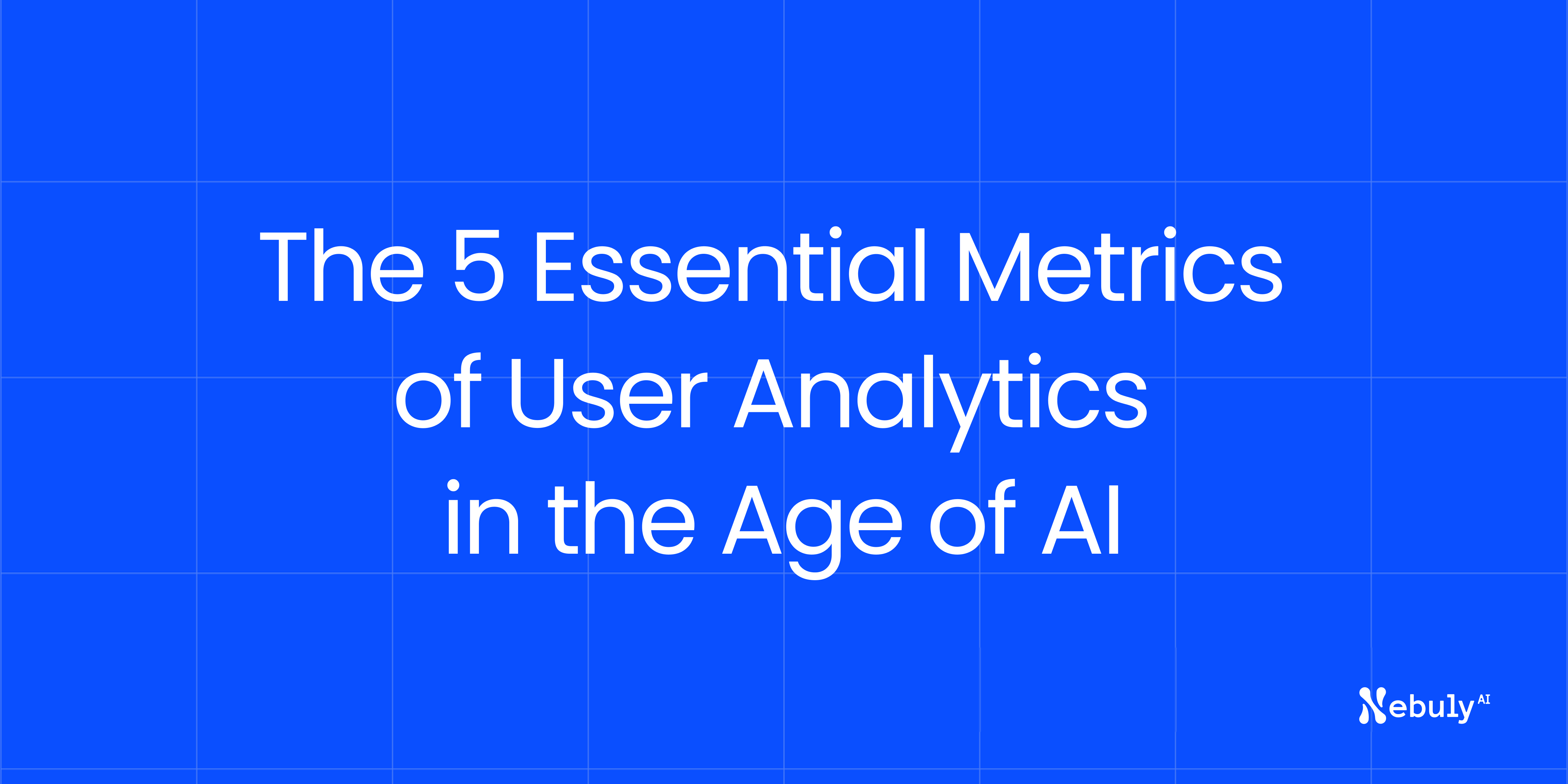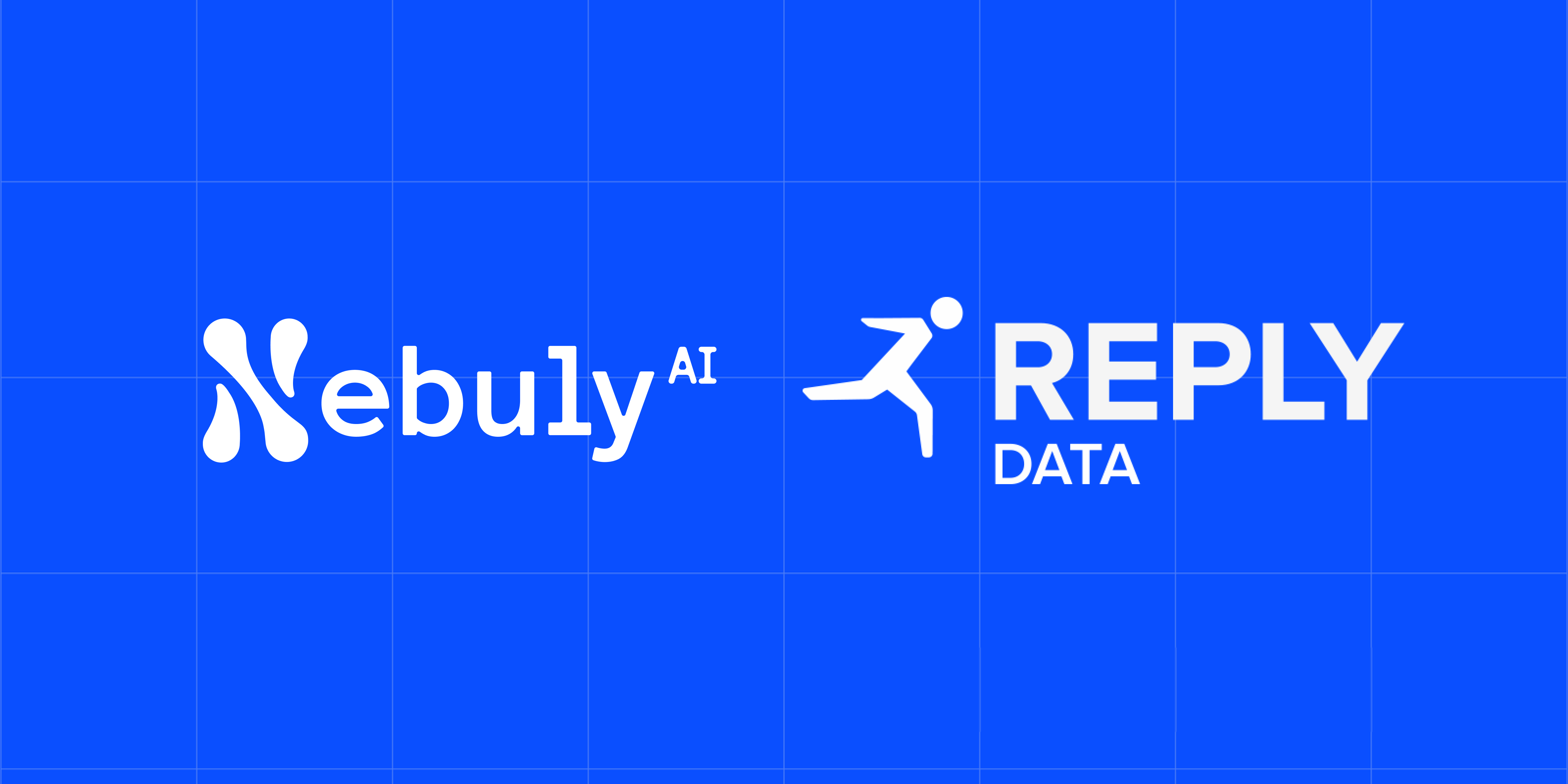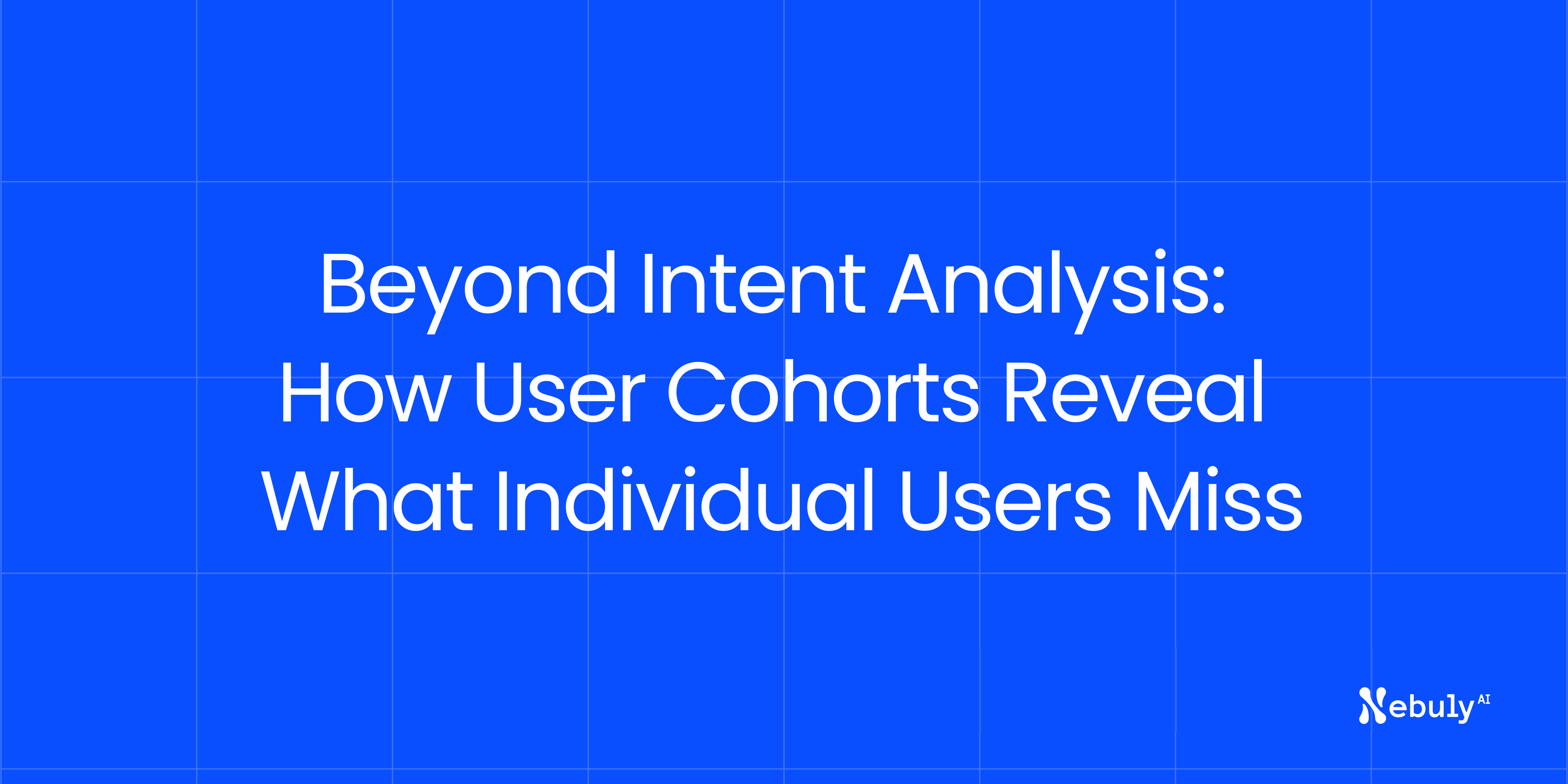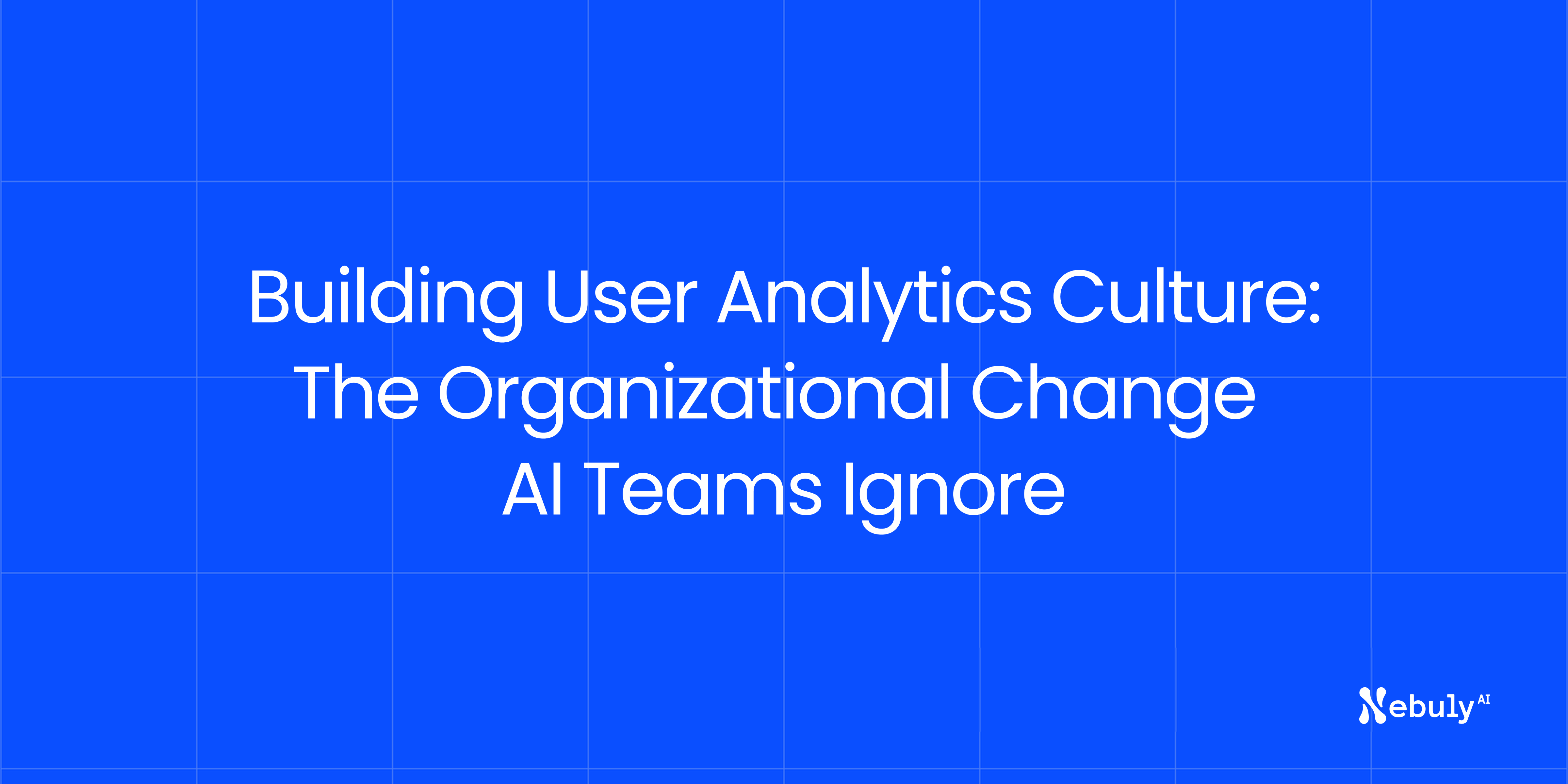The rise of artificial intelligence has fundamentally transformed how we measure digital experiences. Traditional metrics like page views and click-through rates, while still valuable for web analytics, fall short of capturing the nuanced conversations happening between users and AI systems. As businesses rapidly adopt conversational interfaces powered by large language models, a new category of measurement has emerged: user analytics for AI.
These five core metrics represent the essential measurements for understanding how people truly interact with AI systems. Unlike web analytics that tracks surface-level behaviors, these metrics dive deep into the human side of AI conversations, revealing intent, satisfaction, and real business value.
Comparing AI User Analytics to Traditional Web Analytics
Before exploring each metric, it's important to understand how AI user analytics differs from traditional web measurement. While web analytics tracks what pages users visit and what buttons they click, AI user analytics measures the quality and outcomes of natural language conversations.
The shift reflects AI's conversational nature. Instead of clicking through pages, users engage in back-and-forth dialogues where success depends on the AI understanding intent and providing valuable responses.
1. Hours Saved: Measuring Real Productivity Impact
Web Analytics Equivalent: No direct equivalent (This metric is unique to productivity-focused AI applications)
Hours saved quantifies the actual time efficiency gains your AI delivers to users across different teams and use cases. This metric distinguishes between internal and external applications, measuring different types of value creation.
For Internal Use Cases (Employee-Facing AI):
Hours saved directly translates to productivity gains. When an AI assistant helps employees find information faster, automate repetitive tasks, or generate content more efficiently, the time savings represent pure productivity improvement.
For External Use Cases (Customer-Facing AI):
Hours saved often correlates with improved conversion rates and customer satisfaction. Faster problem resolution, more efficient onboarding, or quicker access to information can drive revenue through improved customer experience and reduced friction in buying processes.
Key measurement approaches:
- Establish baseline completion times for common tasks before AI implementation
- Track the reduction in time needed to accomplish specific objectives
- Account for both direct time savings and indirect benefits like reduced context switching
- Segment measurements by user role, department, or customer type to identify where AI delivers maximum impact
Hours saved becomes especially powerful when measured across different user segments. Engineering teams might save hours on documentation while sales teams benefit from faster lead qualification, revealing where AI investments yield the highest returns.
2. Topic Analysis: Understanding What Users Actually Ask
Web Analytics Equivalent: Page Views (Shows content consumption patterns)
Topic analysis reveals the reality behind AI usage by breaking down what users actually discuss with your AI systems. While web analytics shows which pages users visit, topic analysis shows what subjects users care about most in their natural language interactions.
This metric goes far beyond keyword tracking to understand the distribution of user intents, common pain points, and emerging needs across different teams or customer segments. Unlike page views that show predetermined content consumption, topic analysis reveals the organic interests and needs users express when given the freedom of conversational interaction.
Core capabilities include:
- Intent classification that groups related queries regardless of how they're phrased
- Trending topic identification that shows evolving user needs over time
- Topic distribution analysis across user segments to understand different group requirements
- Emerging theme detection that might indicate new feature opportunities or training needs
Topic analysis helps identify gaps between what organizations expected users to ask and what they actually need. Many companies discover their AI systems receive questions far outside their intended scope, revealing opportunities to expand capabilities or better guide user expectations.
3. Retention: Knowing Which Groups Keep Returning
Web Analytics Equivalent: Returning Visitors (Similar concept but measured differently)
Retention measures whether users find enough value in your AI to make it part of their regular workflow. Unlike web analytics return visitor metrics that focus on site visits, AI retention analyzes meaningful engagement patterns within conversational interfaces.
True AI retention goes beyond initial curiosity to sustained usage. Users who return regularly, engage in longer conversations, and successfully complete tasks demonstrate that the system provides genuine value. Retention patterns vary significantly across user types, making segmentation crucial for understanding adoption.
Advanced retention analysis includes:
- Weekly and monthly active users segmented by role and use case
- Conversation frequency and depth trends over time
- User journey progression from trial to regular use
- Cohort analysis showing how different user groups adopt AI capabilities
Different user segments exhibit distinct retention patterns. Power users might engage daily with complex queries while casual users interact weekly for specific tasks. Both patterns indicate healthy adoption when aligned with user needs and expectations.
4. Error Rate: Finding Where AI Misunderstands or Delivers Weak Answers
Web Analytics Equivalent: 404 errors or bounce rate (But much more sophisticated for AI)
Error rate in AI systems measures instances where the AI fails to understand user intent or provides responses that don't meet user needs. Unlike web analytics error tracking that focuses on technical failures, AI error rates capture quality and relevance issues from the user's perspective.
AI errors manifest in various ways beyond simple technical failures. The system might provide accurate but irrelevant information, misinterpret user context, or generate responses that technically answer the question but miss the underlying need.
Sophisticated error detection includes:
- Conversations requiring multiple clarifications or rephrasings
- Sessions ending abruptly after AI responses
- High escalation rates to human support following AI interactions
- User expressions of frustration detectable through behavioral and sentiment analysis
Unlike web analytics bounce rates that indicate quick exits, AI error rates reveal deeper interaction failures. Users might stay engaged but become increasingly frustrated as the AI repeatedly misunderstands their needs, leading to negative experiences despite sustained interaction.
5. Risky Behavior: Spotting Compliance Risks and Unsafe Usage
Web Analytics Equivalent: No direct equivalent (This is unique to AI systems)
Risky behavior detection identifies instances where AI interactions might expose organizations to compliance violations, security risks, or reputational damage. This metric has no equivalent in traditional web analytics because it addresses uniquely AI-related risks around data exposure and inappropriate content generation.
Risk patterns include users sharing personally identifiable information, attempting to access unauthorized data, generating potentially harmful content, or using the AI for purposes outside acceptable use policies.
Critical risk monitoring includes:
- PII or sensitive data exposure in conversations
- Attempts to manipulate AI into producing inappropriate content
- Usage patterns that violate corporate policies or industry regulations
- Conversations touching on confidential information, competitors, or restricted topics
Effective risk detection balances user privacy with organizational protection. The goal is identifying concerning patterns without creating excessive surveillance that inhibits legitimate AI use.
The Essential Layer Alongside Technical Observability
Technical observability remains crucial for AI systems. Metrics like response latency, token usage, system uptime, and model performance form the foundation that keeps AI systems running reliably. These measurements tell you whether your AI infrastructure is healthy and performing within expected parameters.
User analytics provides the complementary layer that reveals whether your functioning AI system actually delivers value to users. While observability confirms your AI responds quickly and stays online, user analytics shows whether those responses help people accomplish their goals.
Both layers are essential for complete AI system understanding:
Technical Observability Layer:
- System performance and infrastructure health
- Model accuracy and response times
- Resource utilization and cost optimization
- Error rates and technical failures
User Analytics Layer:
- Intent understanding and conversation quality
- User satisfaction and task completion
- Behavioral patterns and adoption trends
- Business value and productivity impact
Organizations need both perspectives working together. Technical observability identifies when systems need infrastructure improvements, while user analytics reveals where user experience requires attention. The most effective AI teams use insights from both layers to prioritize improvements and measure success.
How These Metrics Were Established
The field of user analytics for AI emerged from practical necessity as organizations deployed conversational AI systems and discovered traditional metrics couldn't capture their effectiveness. Early pioneers in this space, including teams at companies using platforms like Nebuly, identified patterns in user behavior that weren't visible through technical monitoring alone.
Research conducted through enterprise AI deployments revealed five consistent measurement needs across different industries and use cases. These metrics were refined through analysis of millions of AI conversations, helping establish standardized approaches to measuring user-centric AI performance.
The development of these metrics represents a shift from measuring what AI systems do to measuring what users accomplish with them. This user-centric approach has proven essential for organizations seeking to understand and improve their AI investments beyond technical performance.
Implementing User Analytics in Practice
Organizations implementing these metrics typically start with basic conversation tracking and gradually add sophistication. The five metrics work together to provide comprehensive user insight, but teams often begin with the measurements most relevant to their immediate goals.
Getting started often involves:
- Establishing baseline measurements before implementing new AI features
- Identifying key user segments and their distinct interaction patterns
- Setting up automated tracking for the five core metrics
- Creating dashboards that combine user analytics with technical observability
The most successful implementations integrate these metrics into regular business reviews alongside traditional KPIs. Teams use the insights to make data-driven decisions about AI improvements, user training needs, and system optimizations.
Early adopters of comprehensive user analytics report discovering insights within the first week of implementation. Common findings include unexpected usage patterns, misalignment between intended and actual use cases, and specific opportunities to improve user experience through targeted changes.
The Future of AI Measurement
These five metrics represent the foundation of an emerging discipline tailored to the age of conversational AI. As AI interfaces become the primary way people interact with software, measuring success requires understanding human outcomes rather than just system outputs.
The companies mastering these measurements gain significant advantages in AI adoption and effectiveness. They can identify what works, address what doesn't, and continuously improve based on real user behavior rather than assumptions about what users need.
This measurement approach reflects AI's maturation from experimental technology to business-critical infrastructure. Understanding both the technical and human sides of AI performance becomes essential for organizations serious about realizing value from their AI investments.
The discipline continues evolving as new interaction patterns emerge and organizations discover additional metrics that matter for their specific use cases. However, these five core measurements provide the foundation for understanding AI success from the user perspective, complementing technical observability to create complete visibility into AI system performance.






